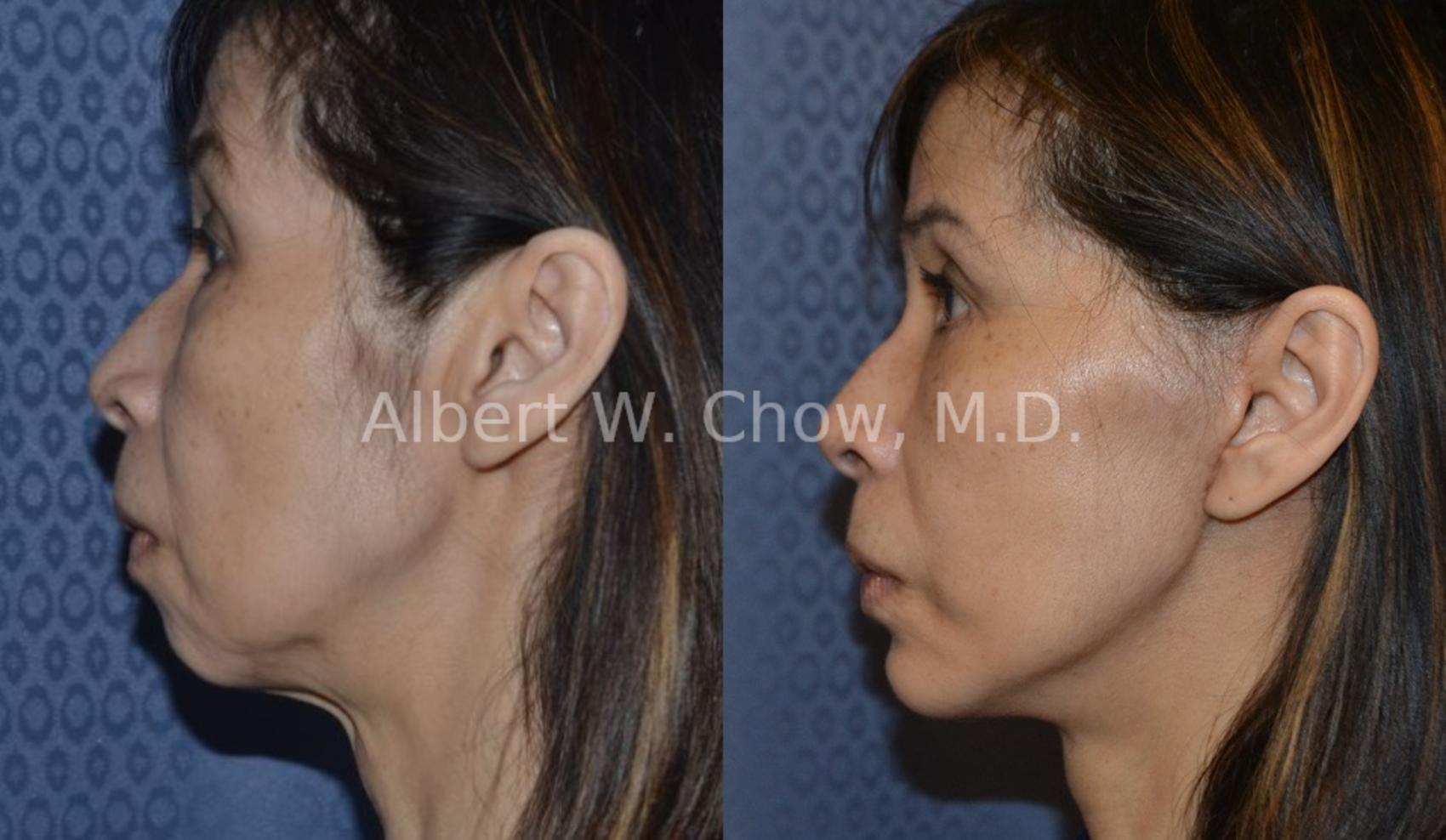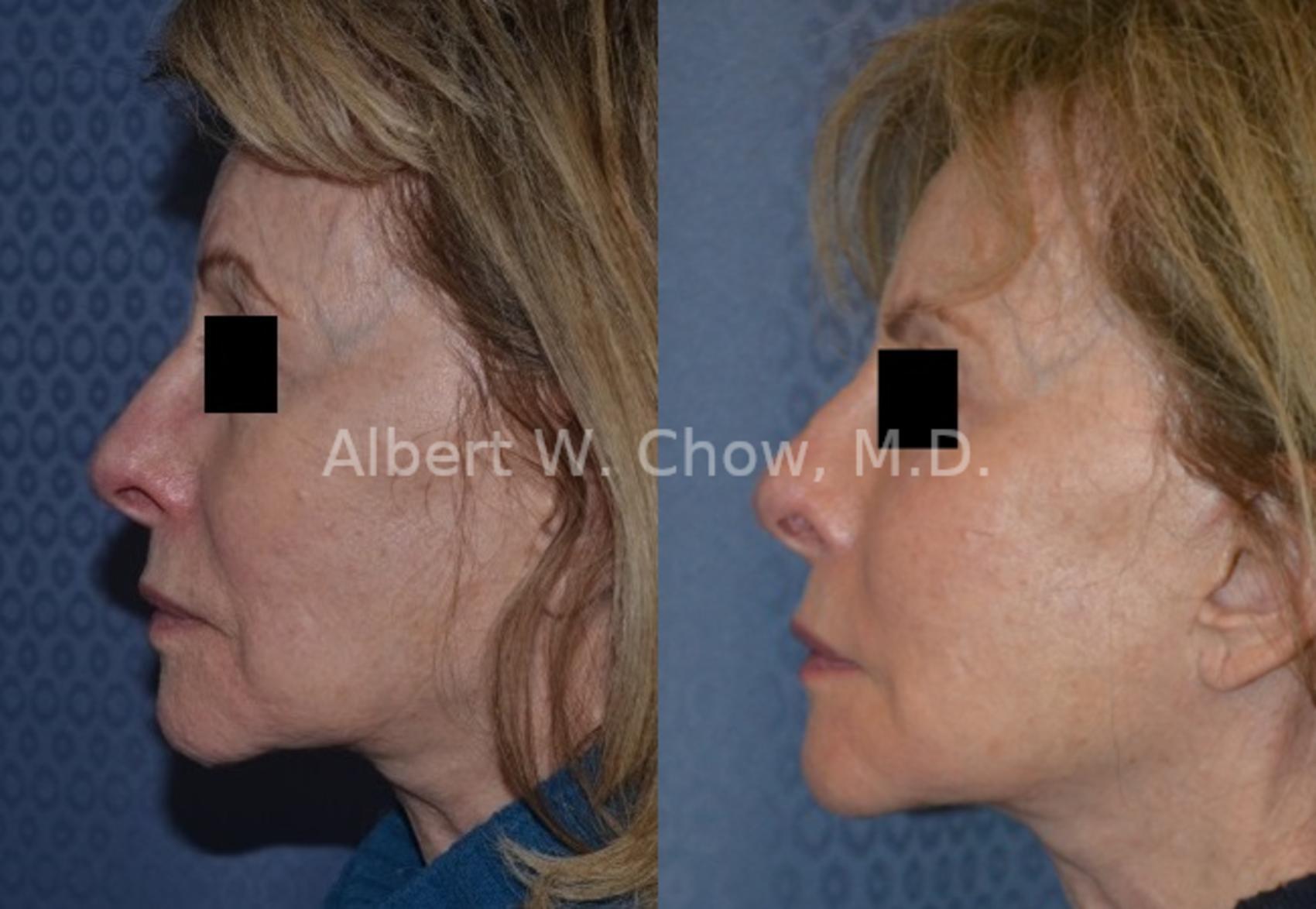Those considering a facelift at my facial plastic surgery practice in San Francisco are often surprised to learn all facelift procedures are not the same. You have a spectrum of facelift procedures available to turn back the clock as effectively and efficiently as possible, from full facelifts to nonsurgical or “liquid” options. How can you decide which approach is right for you?
In this blog post, I’ll discuss the best candidates for each facelift technique to help you find the perfect fit for your unique goals.
Full Facelift
Often considered the gold standard of facial rejuvenation, a full facelift treats advanced signs of facial aging, including:
- Lower face and neck sagging
- Flat or fallen cheeks
- Jowls
- Deep skin wrinkles or folds
People often choose to combine a full facelift with a neck lift to fully rejuvenate their lower faces and necks.
A full facelift is the most comprehensive anti-aging procedure for the mid to lower face. While there is no “right age” for this approach as everyone experiences aging at their own rate, full facelift candidates are often in their 50s, 60s, and older.
To see real examples of the results you can expect after a full facelift, please visit my before-and-after photo gallery.
Mini Facelift
Also called the “S lift,” a mini facelift treats less severe signs of aging and creates subtler rejuvenation results. While results are not as comprehensive as a full facelift, the tradeoff is smaller incisions, a less complex procedure, and a faster recovery.
A mini facelift may be right for you if you are just beginning to notice jowls, lower face drooping, and loss of jawline definition and want to stay proactive about treating these concerns.
Endoscopic Midface Lift
A midface lift addresses the tissues in the middle part of the face that surround the cheeks, nose, and mouth. This approach does not dramatically improve lower face sagging or jowls. Instead, it addresses loss of volume, hollowness, and sagging in the midface, as well as the downward migration of fat that happens in the cheeks over time.
This technique is more effective and longer-lasting than fillers and other nonsurgical treatments for the midface. However, its endoscopic nature still keeps invasiveness to a minimum. This approach is ideal for people who:
- Need a bit more correction than nonsurgical treatments provide
- Have mild to moderate signs of aging
- Primarily want to address the middle third of the face
Many people choose to combine their endoscopic midface lift with lower blepharoplasty to create an even smoother and younger-looking transition between their lower eyes and upper cheeks.
Liquid or Nonsurgical Facelift
For those who aren’t quite ready for surgery, a nonsurgical or liquid facelift provides an effective alternative. This approach combines strategic injections of BOTOX® Cosmetic and dermal fillers to smooth away wrinkles, add volume in hollow areas, and create a subtle lifting effect.
The drawback of this technique is that it is temporary. BOTOX and fillers typically only last a matter of months compared to the 10 years a full facelift offers. If you have early signs of aging or want to maintain your results after a surgical rejuvenation procedure, a liquid facelift may be your best solution.
Learn more about the benefits and drawbacks of nonsurgical facelifts in this previous blog post.
Your Best Facelift Option
Ultimately, the best way to determine the right facelift approach for you is to consult one-on-one with a board-certified plastic surgeon. Your surgeon will assess your concerns in-depth and recommend the best treatment plan for you based on your anatomy and goals.
If you would like to discuss your facelift options at my San Francisco practice, please request a consultation online or call (415) 441-1888.






Leave a Reply